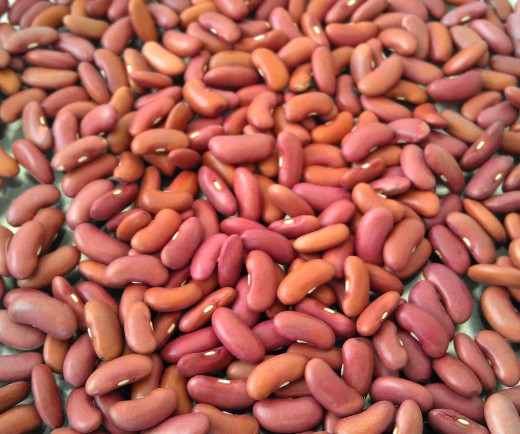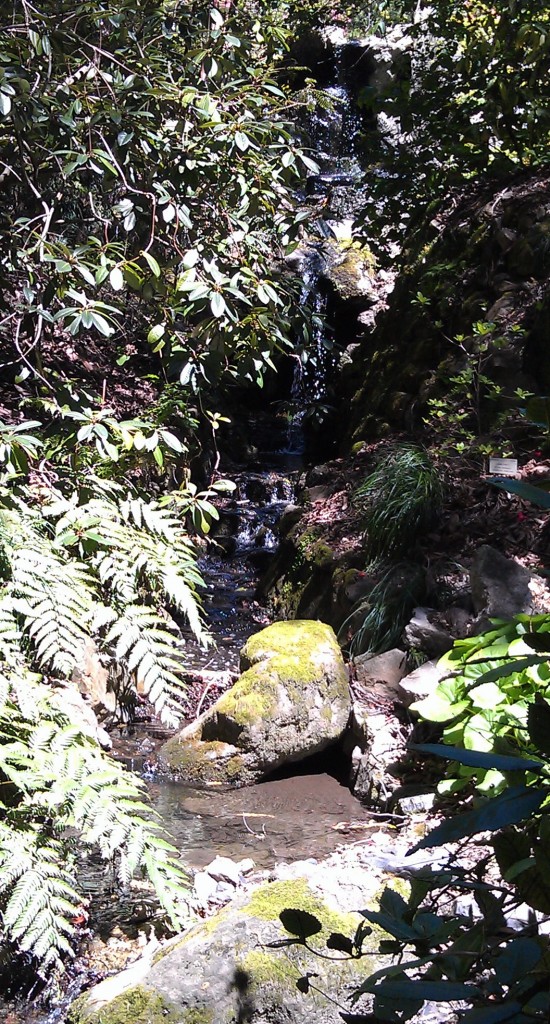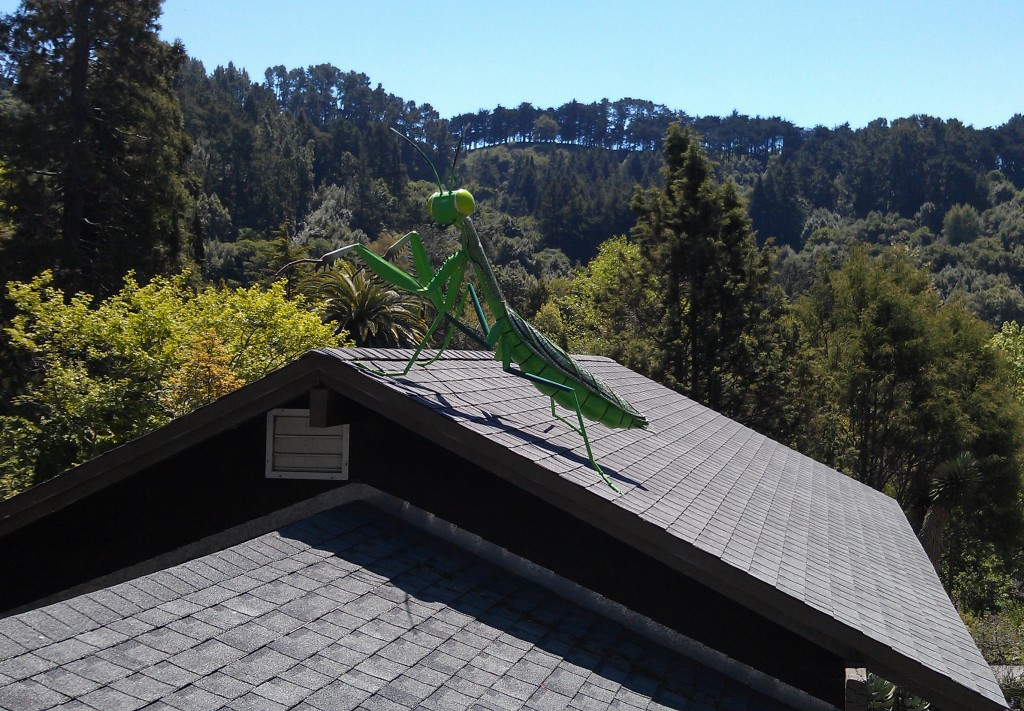The poem “ABC” by Robert Pinsky has 26 words exactly (not including the title). Each words starts with a letter of the alphabet in order. The first words starts with “A”. The second word starts with “B”. The third word starts with “C”. And so on, until the last word which starts with “Z”. You can read/see the poem on The New York Review of Books.
Song: “Just Give Me a Reason”
From Wikipedia…
“Just Give Me a Reason” is a song written and recorded by American recording artist andsongwriter Pink featuring fun.’s lead singer Nate Ruess. The song was chosen as the third single from Pink’s sixth studio album The Truth About Love (2012). … The song became an international success, topping charts in over 20 countries worldwide”
Here’s link to performance of the song on YouTube. And the lyrics here.
Are phytic acid in grains, beans, and nuts really a problem?
Phytic acid is found in most grains, beans, nuts, and some vegetables. Phytic acid is found is most legumes which is a class of vegetable that contains several seeds in a pod (such as beans, peas and lentils). Phytic acid in salt form is known as phytate. Phytic acid is the form in which many plants store their phosphorus. In grains, it is most often found in the hulls and bran of the grains.
Humans and other non-ruminate animals can not digest phytic acid or phytate because they do not have the digestive enzyme phytase that removes the phosphate from the phytate molecule.
Furthermore, the phytic acid chelates (meaning binds) to minerals such as iron, zinc, calcium, and magnesium reducing the bioavailability of the these important mineral from the food in which it came. For example, you have heard that whole grains contain a lot of such important minerals. However because of phytic acid, not 100% of the minerals that is in the whole grain is absorbable by our intestines since it is bound within phytic acid which we can not digest.
Because in part due to these reasons, the Paleo diet avoid grains and legumes. (It also avoid dairy for other reasons).
But is phytic acid really a problem?

Misconceptions about phytic acid
some say that the risk of phytic acid is overblown. And when consumed in moderation and with proper preparation of the foods with phytic acid, they should be perfectly fine. We probably can tolerate a certain amount of phytic acid. We do not need to completely eliminate foods with phytic acid. Many plant-based foods that contain some phytic acid are still healthy and nutritious for us to eat.
Just because not all the minerals in the grain is absorbed, it does not mean that none of the minerals is absorbed. You do get some of them. And it is not saying that phytic acid will remove these minerals out of your body. They do not.
In a Revolution Health Radio podcast, guest Mat Lalonde debunks the misconception that phytic acid is going to steal nutrients away from you. He says …
“But it turns out that that phytic acid in the food is most commonly bound to a metal ion already … it just means that if you look at, say, the iron content of kale, well, you’re not going to absorb all the iron that you see because some of it is bound to phytic acid or phytates”
Although some leafy green vegetables such as kale and spinach have the mineral iron as listed on paper, they contain phytic acid that makes that iron not available for absorption. Therefore it turns out that you absorb more iron from animal sources such as from meats and liver.
As long as you do not have a sensitivity to nut, they are okay in moderation. And if you are concerned, just eat your nuts not at the same time as your intake of foods high in minerals and nutrients.
In fact phytates may have some health benefits in that it acts as antioxidants. It also may help prevent kidney stones by preventing the formation of calcium oxalate and calcium phosphate salts. LiveStrong article writes …
“However phytates are not anti-nutrients because they also act as antioxidants and phytate-associated mineral deficiencies are unlikely to occur in populations with a normal, healthy diet. An article in the September 2010 issue of the European Journal of Nutrition reports that diets high in phytates may be protective against kidney stones, cardiovascular disease and certain cancers.”
Phytic Acid in Nuts
Nuts in general contain as much as or more phytic acid than in grains. Consuming a moderate amount of nuts is fine, just do not over-consume them or use too much nut flour.
Chris Kresser mentions in his article that …
- Diets high in phytic acid may cause mineral deficiency
- “we absorb approximately 20 percent more zinc and 60 percent more magnesium from our food when phytic acid is absent”
- Phytic acid interferes with enzymes pepsin which helps breakdown proteins in the stomach
- Phytic acid interferes with the enzyme amylase which helps breakdown of starch.
- Best to avoid nut butters which are made with unsoaked nuts (which is most commerical nut butter). Sprouted nut butters may be better.
He says that …
“The majority of this data indicates that soaking nuts for eighteen hours, dehydrating at very low temperatures (either in a food dehydrator or a low temperature oven), and then roasting or cooking the nuts would likely eliminate a large portion of the phytic acid.”[3]
Soaking to Remove Phytic Acids
The three primary ways to remove some of the phytic acid (but not all) from grains, beans, and nuts is by soaking, fermenting, or sprouting. Many traditional cultures take great care in preparation of such foods in order to make them as digestible as possible.
If you buy dry or raw beans, you need to soak them before cooking. Possible exception may be black-eyed peas and lentils.[2] Many cooking techniques explains how …
WildHealthFoods says that …
“legumes (including green beans) contain natural toxins and enzyme inhibitors and need to be either cooked or sprouted for proper digestion. Soybeans, which are particularly high in mineral-binding phytic acid, are best eaten only in cooked, fermented forms such as miso, shoyu and tempeh.”[1]
Before soaking, discard shivered, broken, or discolored beans because they will not cook properly. Soaking overnight in a glass container is best and beans can grow three to four times their size. So make sure you have enough water. Here is a good article on how to soak beans.
After soaking, discard water, drain and rinse thoroughly to remove the toxins that comes out.
Soaking not only removes some of the phytic acid and some of indigestible complex sugars that causes gas, it hydrates the bean so that it cooks more evenly and quicker. Raw beans are dirty and has not been washed. They can not wash them beforehand because any moisture will cause them to mold or sprout. Therefore, soaking the beans helps remove the accumulated surface dirt, bacteria, fertilizer, and pesticide residues.
After soaking, cook in rapidly boiling water without lid — adding water as needed. Most beans will take a hour or more to cook until they are soft. They should be soft enough so that you can mash them with two fingers.
Do not worry about overcooking because it is difficult to overcook most beans. Better to overcook than to undercook. If you see any foam in the boiling water, skim it off as that will remove more of the toxins.
To improve digestion, you can add Kombu seaweed in the soaking and cooking process.[1]
MayoClinic has several soaking methods which includes “slow soak”, “hot soak”, “quick soak”, and “gas-free soak”. The last one is interesting as it says that “75 to 90 percent of the indigestible sugars that cause gas will have dissolved into the soaking water” using this method.[2]
Cooked beans can be frozen for later use.
If you don’t want to go through the trouble to soak and prepare beans properly, look for manufactures that prepares and cooks bean properly before canning them.
One such product is Eden Organic Kidney Beans which indicate that they are “soaked overnight and expertly cooked” in the Amazon.com product description.
Soaking however, will not remove the phytic acid from certain grains that are low in phytase. Brown rice for example does not contain enough of the enzyme phytase; so soaking brown rice would not reduce phytic acid much. White rice has much less phytic acid since the bran has been removed. But that also means that the vitamins have been removed too.
Fermenting to Remove Phytic Acid
Raw soybeans and processed soy products are not great foods to eat due to their anti-nutrient phytic acid content. However, people in Asia eat soy without any problems. That is because they eat them in fermented form such as in miso, natto, tempeh, and tamari. The fermentation process neutralizes the anti-nutrients in soy.
Sprouting to Remove Phytic Acid
Sprouting the nuts and seed is another way to remove phytic acid. Sprouting activates phytase enzyme which helps break down phytic acid. Sprouting is also known as germination and may also enhance the vitamin content of the seeds and beans.
You may find that some nuts and seed from health food store are labelled as “sprouted”. For example, GoRaw has pumpkin seeds that are sprouted then dehydrated under 105 degrees. That is because high heat will destroy the phytase enzyme.
Soaking and Sprouting Decreases Enzyme Inhibitors
In addition, soaking and sprouting can also decrease the non-beneficial enzyme inhibitors naturally present in the grains and nuts. Grains and nuts are seeds, they want to pass through your digestive system and out the other end unharmed so that they can perpetuate their species. That is why they are naturally more difficult to digest. They also have natural enzyme inhibitors that makes your digestive enzymes less effective.
Soaking and sprouting simulates rain in nature. When grains and seeds gets rain, it lowers their defensive mechanism and decrease their phytic acid and enzyme inhibitors.
References:
- [1] WildHealthFood.com – How to Cook Dried Beans
- [2] Beans and other legumes: Types and cooking tips – MayoClinic.com
Here’s help in selecting and preparing beans and other nutritious legumes. - [3] Another reason you shouldn’t go nuts on nuts
Most people on the Paleo diet aren’t aware that nuts are often higher in phytic acid than grains. Find out why this is a problem – and what to do about it. - [4] Living With Phytic Acid – Weston A Price Foundation
Rami Nagel writes about phytic acid and how to avoid it and why. - [5] Most Effective Way to Reduce Phytic Acid in Brown Rice | Kitchen Stewardship
A fairly simple method for soaking brown rice, similar to sourdough fermentation, that reduces phytic acid almost completely, twice as effective as germinated brown rice.
Link to Interesting Statues and Art Pieces Around the Globe
Comedian John Pinette’s clip about Gluten
Photo of Lady with Hand Bag over Her Head
Photo: Small Waterfall in Berkeley Botanical Garden
Praying Mantis on Roof
Photo overlooking San Francisco Bay
Where to Find Homemade KimChi Recipe
KimChi recipe on For the Love of Food blog is a good one to start. It is based on the method in the book Wild Fermentation by Sandor Katz. There are many variant methods for making KimChi and many use different ingredients. It is an art as well as science. If you want to learn more detail about fermentation, read the book Wild Fermentation. I have.
PerfectHealthDiet has another kimchi recipe and explains the health benefits of fermented food, which kimchi is. He also answers a lot of questions in the blog comments. There could have been more emphasize on the need to make sure the vegetables are submerged in brine throughout the fermentation process in order to avoid molds.
Some people like to put a leaf of cabbage or bok choy at the top to prevent air from getting in. Others like to put plastic wrap between lid of jar.
Dr. Ben Kim has a recipe that uses the “secret ingredient” of apple/pear/onion. This is better than using of sugar, which is what is often used in commercial kimchi. Although, this “secret ingredient” is not such a secret. Because many other recipes uses this as well.
In particular, here is a YouTube video that use that. Although I would omit the sugar in this one.



